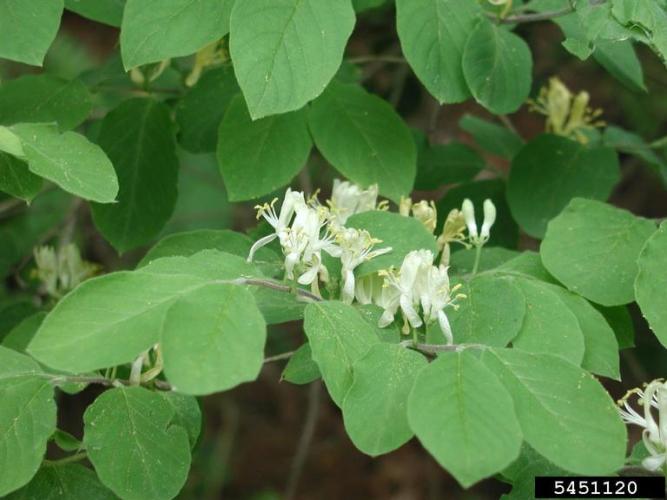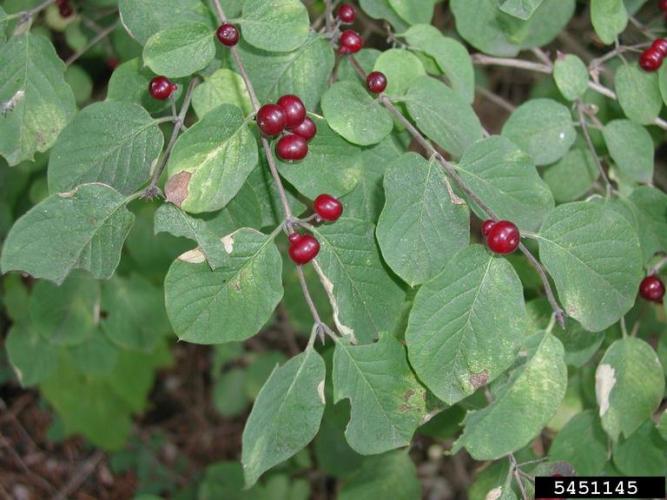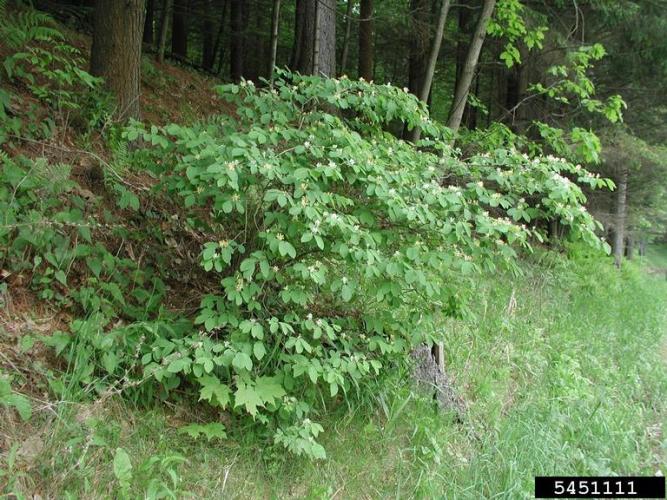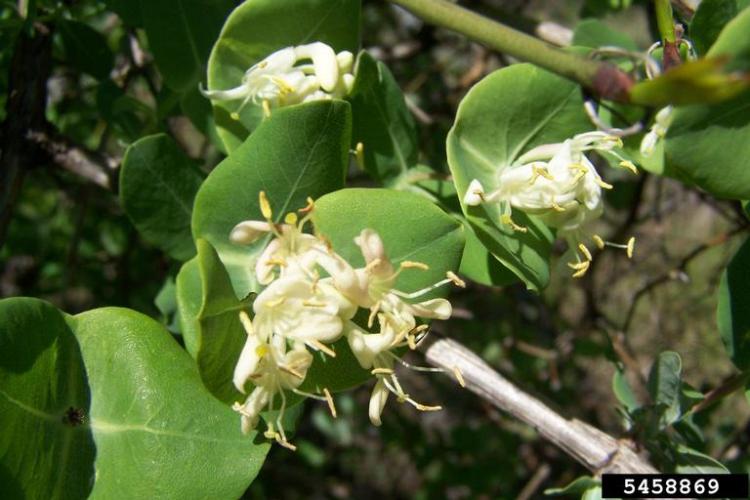Honeysuckle, Dwarf shrub
Identification
Appearance
Lonicera xylosteum is a perennial shrub that can reach 8-10 feet tall.
Foliage
Leaves are opposite, elliptical, deciduous and 1-2.5 inches long..
Flowers
Flowering occurs in May when white flowers develop in pairs in the axils of the leaves.
Fruit
Fruits (when produced) are dark red berries that are eaten and spread by birds.
Biology
This is considered a watch list species.
Ecological Threat
Lonicera xylosteum has not yet become prominent on the New England landscape. However, it has the potential to form large thickets that would suppress the growth of native shrubs and herbaceous plants. More information is necessary to assess the status of this species in this region.
Origin
Native to Eurasia
Habitat
Abandoned field, early successional forest, edge, open disturbed area, yard or garden. Lonicera xylosteum can be found along the edges of woods and in open canopy forests. Like the other shrubby honeysuckles, it is tolerant of a wide range of soil conditions and is used in for landscaping in difficult spots. It prefers full sun, but can also tolerate low light conditions.
Vermont Distribution
Citations
Photo Credit
Dwarf Shrub Honeysuckle, 5451120, 5451111, 5451145, Leslie J. Mehrhoff, University of Connecticut, Bugwood.org
Western While Honeysuckle, 5458869, Karan A. Rawlins, University of Georgia, Bugwood.org
Information Credit
Plant Conservation Alliance®s Alien Plant Working Group
Invasive Plant Atlas of New England
Center For Invasive Species and Ecosystem Health



